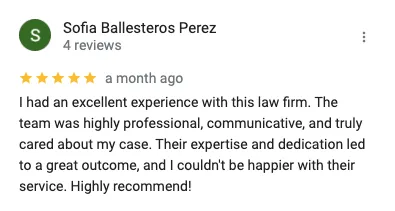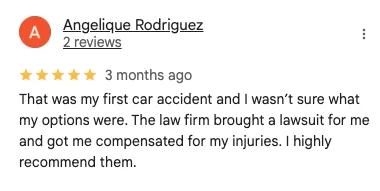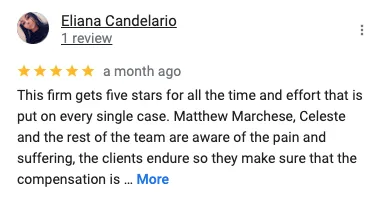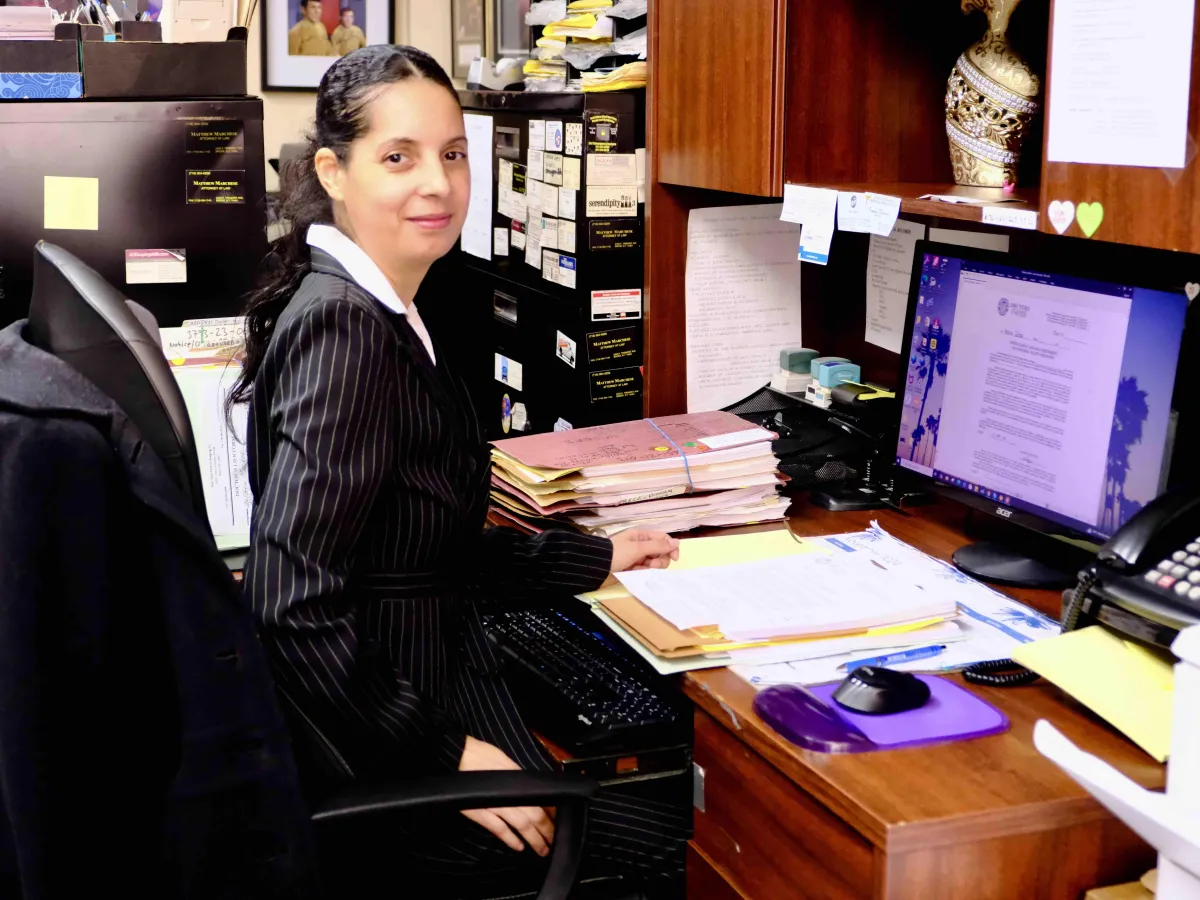Construction Accident Lawyer in the Bronx
Falls, debris, scaffolding — if you got hurt on the job, we know what to do next.
From Matt: Hey, it's Matt Marchese from MyBronxLawyer.com. We’ve helped construction workers hurt in falls, ladder accidents, falling bricks, scaffold failures, and defective equipment. You don’t need to fight workers’ comp, the building owner, and their insurance company on your own.These cases are serious — and sometimes deadly. If you’re out of work, worried about bills, or were told to “just file comp” and move on, talk to us first. We’ll explain all your options — and fight like hell for you and your family.
Bronx Construction Injury Lawyer
Construction workers in the Bronx face real danger every day — on scaffolds, rooftops, ladders, job sites, and demolition zones. If you were injured on a site, you may have more legal options than your employer told you.
Injured at Work — Is It Just Workers’ Comp?
Not always. In many Bronx construction injury cases, you can sue the property owner or general contractor — even if you’re getting workers’ comp. New York Labor Laws Sections 240, 241, and 200 protect workers from unsafe job sites and failed safety protections.
That means if you fell from a ladder, scaffold, or roof — or were hit by debris — you may be eligible for a third-party injury claim that could be worth far more than comp alone.
Common Construction Site Injuries
- Falls from heights (ladders, scaffolds, roofs)
- Crush injuries and falling objects
- Tool, machinery, and electrical injuries
- Trips and slips caused by poor site safety
- Back, spine, and traumatic brain injuries
Many of these accidents happen because the site wasn’t secured, didn’t have proper harnesses, or violated safety codes.
Who’s Responsible?
Under New York Labor Law, owners and contractors can be held responsible if they fail to provide proper safety devices, harnesses, ladders, or fall protection. It doesn’t matter if your boss told you to keep working — if the site was unsafe, that’s on them.
Not in a Union? Still Protected.
Union workers aren’t the only ones with rights. We’ve helped non-union day laborers, undocumented workers, and subcontractors win major construction injury cases. You don’t have to go it alone — and your immigration status does not affect your right to sue.
What Should You Do After a Construction Injury?
- Report the accident to your supervisor or foreman — but keep it brief
- Go to a doctor or urgent care to document the injury
- Take photos of the site and equipment, if safe to do so
- Get names of any coworkers who saw what happened
We’ve Handled Construction Cases Across the Bronx
Our office has represented clients injured at high-rise projects, NYCHA buildings, Co-op City developments, and sites near the Major Deegan Expressway and Bay Plaza projects.
If your case involves poor site safety, scaffold failure, or a rushed contractor cutting corners, we want to hear about it.
What If the Site Was City-Owned?
Construction accidents on public or city-controlled properties (like NYCHA or municipal buildings) may require a Notice of Claim within 90 days. Don’t delay. We cover how that works on our FAQ page.
Don’t Wait — The Insurance Companies Already Started
Site supervisors and insurance reps move fast after a construction injury. They’re documenting what helps them — not you. Before you sign anything or give a statement, talk to a Bronx firm that knows these cases inside and out.
Helpful Info
What Should You Do
After Visiting Urgent Care?
If you’ve been to urgent care after a car accident or fall, you’re not alone — it’s one of the most common first steps. But urgent care notes alone aren’t always enough. Here’s what matters next, and how to protect your health and case.
Learn more →Learn More
Explore specific legal issues tied to real Bronx neighborhoods and crash types. These resources help explain what to expect if you were injured in one of these common local scenarios.
Call 7 days a week 9am-9pm.
LET'S TALK
VISIT US
© 2025 Matthew Marchese P.C. All Rights Reserved
Law Firm of Matthew Marchese, 2403 East Tremont Avenue, Bronx, NY, 10461
The information on this website is for general information purposes only. Nothing on this site should be construed as legal advice in any particular case. The information does not create an attorney-client relationship. Attorney advertising. Prior results do not guarantee a similar outcome.
If you fell from a ladder, got hit by a tool, or got injured at a site — union or non-union — we’ll make sure someone’s held responsible. These are the cases we go all-in on. If you were told it’s “just workers’ comp,” give us a call first.
Bronx Construction Injury Lawyer
Construction workers in the Bronx face real danger every day — on scaffolds, rooftops, ladders, job sites, and demolition zones. If you were injured on a site, you may have more legal options than your employer told you.
Injured at Work — Is It Just Workers’ Comp?
Not always. In many Bronx construction injury cases, you can sue the property owner or general contractor — even if you’re getting workers’ comp. New York Labor Laws Sections 240, 241, and 200 protect workers from unsafe job sites and failed safety protections.
That means if you fell from a ladder, scaffold, or roof — or were hit by debris — you may be eligible for a third-party injury claim that could be worth far more than comp alone.
Common Construction Site Injuries
- Falls from heights (ladders, scaffolds, roofs)
- Crush injuries and falling objects
- Tool, machinery, and electrical injuries
- Trips and slips caused by poor site safety
- Back, spine, and traumatic brain injuries
Many of these accidents happen because the site wasn’t secured, didn’t have proper harnesses, or violated safety codes.
Who’s Responsible?
Under New York Labor Law, owners and contractors can be held responsible if they fail to provide proper safety devices, harnesses, ladders, or fall protection. It doesn’t matter if your boss told you to keep working — if the site was unsafe, that’s on them.
Not in a Union? Still Protected.
Union workers aren’t the only ones with rights. We’ve helped non-union day laborers, undocumented workers, and subcontractors win major construction injury cases. You don’t have to go it alone — and your immigration status does not affect your right to sue.
What Should You Do After a Construction Injury?
- Report the accident to your supervisor or foreman — but keep it brief
- Go to a doctor or urgent care to document the injury
- Take photos of the site and equipment, if safe to do so
- Get names of any coworkers who saw what happened
We’ve Handled Construction Cases Across the Bronx
Our office has represented clients injured at high-rise projects, NYCHA buildings, Co-op City developments, and sites near the Major Deegan Expressway and Bay Plaza projects.
If your case involves poor site safety, scaffold failure, or a rushed contractor cutting corners, we want to hear about it.
What If the Site Was City-Owned?
Construction accidents on public or city-controlled properties (like NYCHA or municipal buildings) may require a Notice of Claim within 90 days. Don’t delay. We cover how that works on our FAQ page.
Don’t Wait — The Insurance Companies Already Started
Site supervisors and insurance reps move fast after a construction injury. They’re documenting what helps them — not you. Before you sign anything or give a statement, talk to a Bronx firm that knows these cases inside and out.
Learn More
Explore specific legal issues tied to real Bronx neighborhoods and crash types. These resources help explain what to expect if you were injured in one of these common local scenarios.
Helpful Info
What Should You Do
After Visiting Urgent Care?
If you’ve been to urgent care after a car accident or fall, you’re not alone — it’s one of the most common first steps. But urgent care notes alone aren’t always enough. Here’s what matters next, and how to protect your health and case.
Learn more ↗ABOUT US
We truly believe in putting our clients first. We are part of the community we serve and we understand the challenges and needs of our clients better than any other law firm.
GET IN TOUCH
Mon - Fri | 9:00 AM - 5:00 PM
Sat - Sun | Closed
We answer the phone between 9am-9pm
QUICK LINKS
© 2025 Matthew Marchese P.C. All Rights Reserved
Law Firm of Matthew Marchese, 2403 East Tremont Avenue, Bronx, NY, 10461
The information on this website is for general information purposes only. Nothing on this site should be construed as legal advice in any particular case. The information does not create an attorney-client relationship. Attorney advertising. Prior results do not guarantee a similar outcome.





